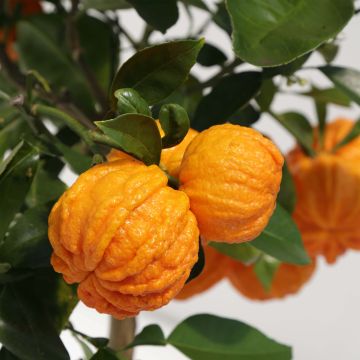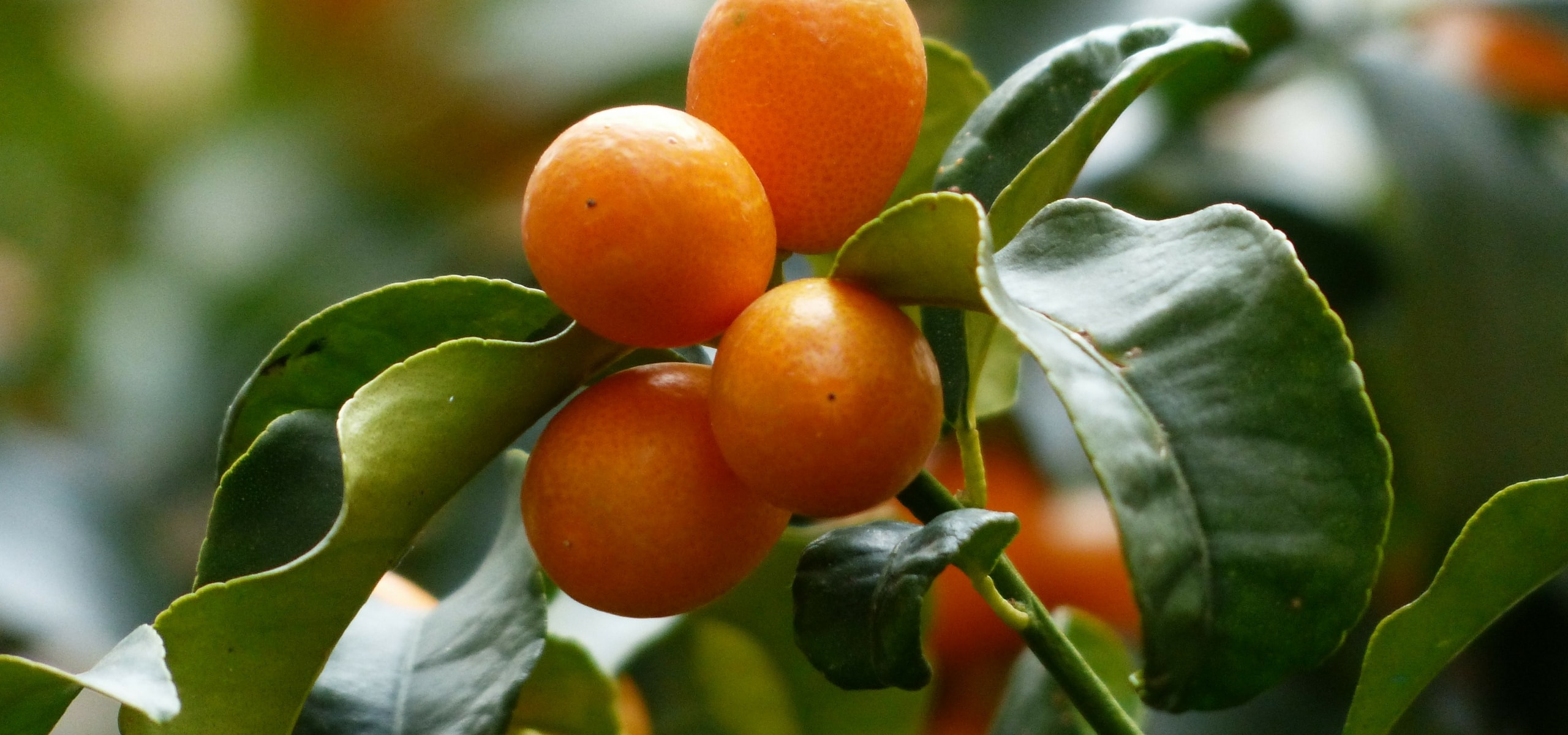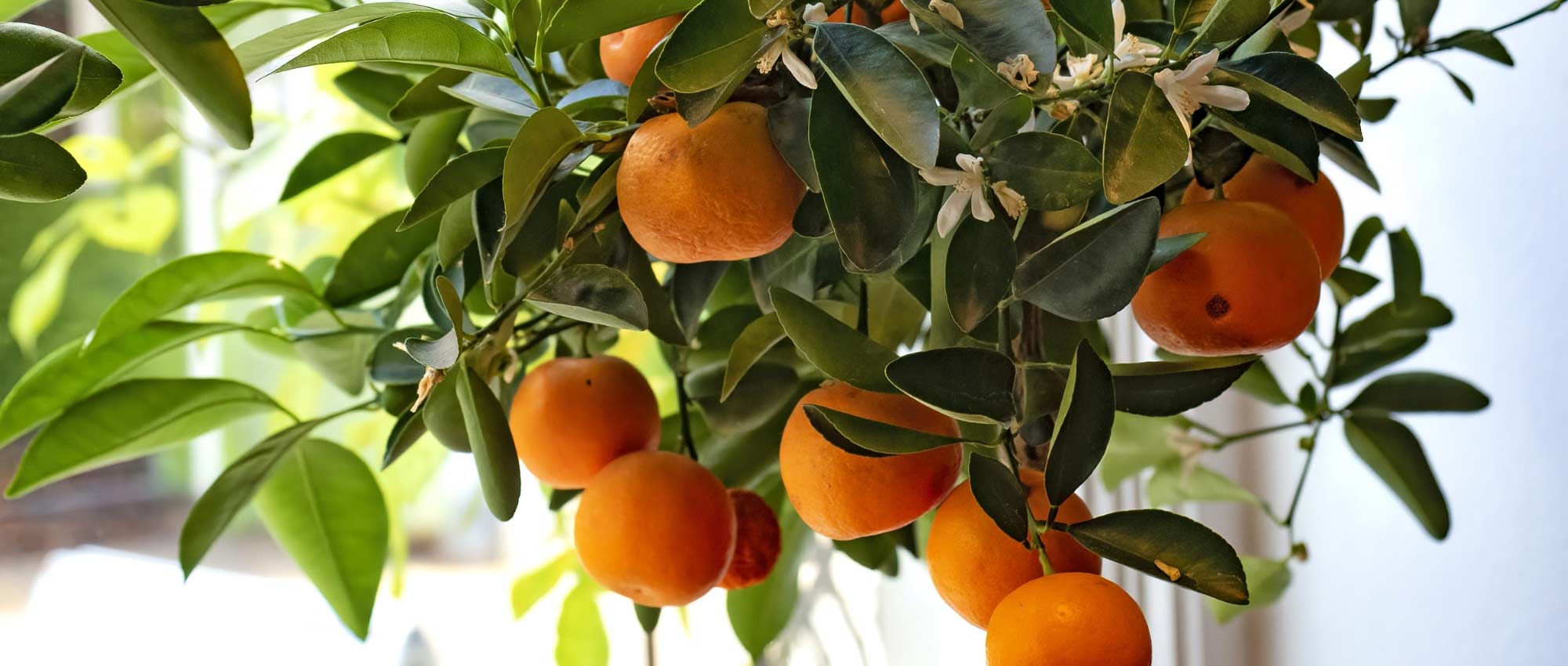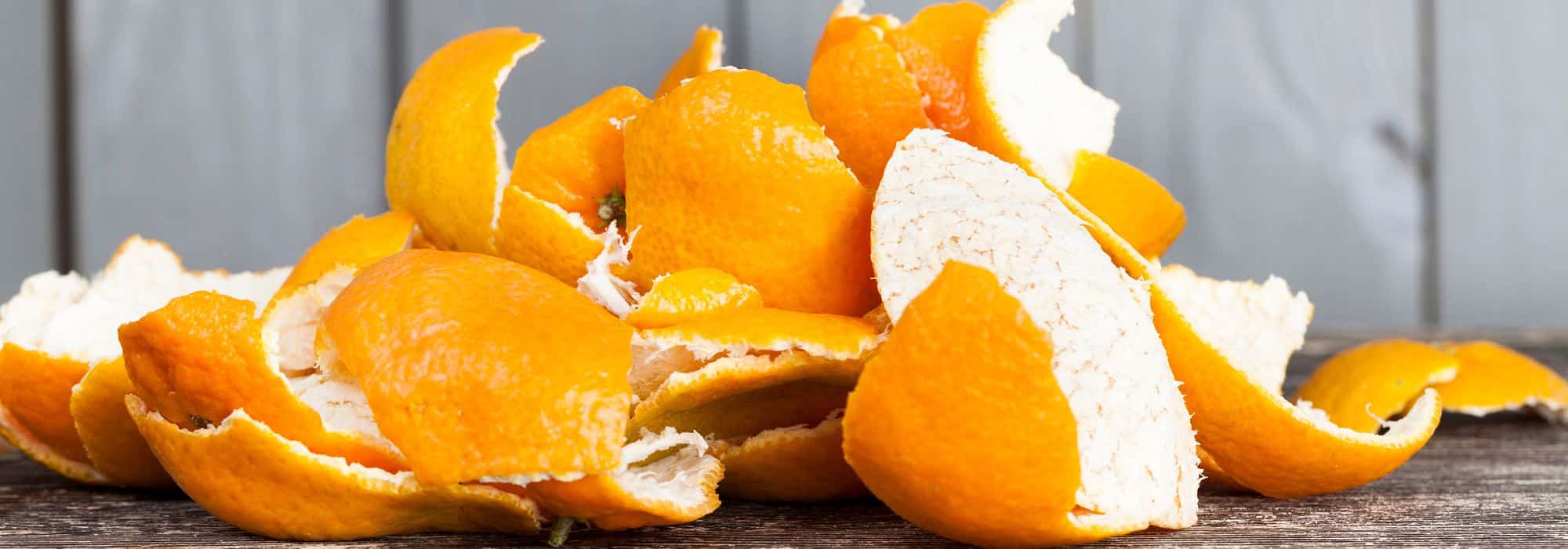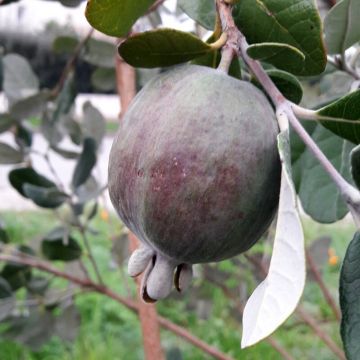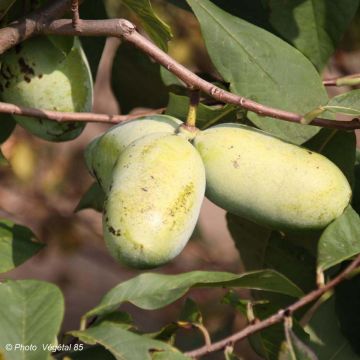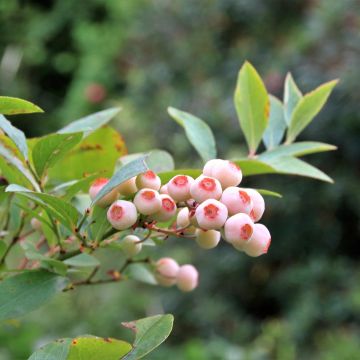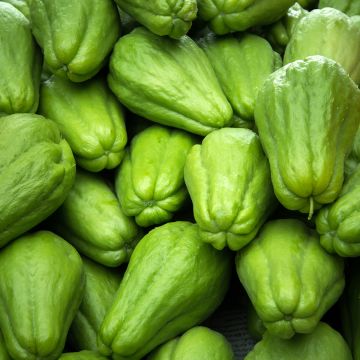

Calamondin - Citrus madurensis


Calamondin - Citrus madurensis
View more pictures
Hide images

Brigitte B.

Since the customer review provided does not contain any text to be translated, no action will be taken in this case. If you have another customer review or any other text that requires translation, please feel free to submit it. Thank you!
Brigitte B. • 56 FR
Calamondin - Citrus madurensis
Citrus madurensis
Calamondin, Calamondin Orange, Panama Orange.
It took a little while to adapt. I pruned it a bit a month ago, especially some rather disproportionate branches, and today it's covered in fragrant flowers. I've had another one for 3 years that produces very few flowers, so I believe the pruning worked well for its little brother.
Anne, 03/05/2025
Special offer!
Receive a €20 voucher for any order over €90 (excluding delivery costs, credit notes, and plastic-free options)!
1- Add your favorite plants to your cart.
2- Once you have reached €90, confirm your order (you can even choose the delivery date!).
3- As soon as your order is shipped, you will receive an email containing your voucher code, valid for 3 months (90 days).
Your voucher is unique and can only be used once, for any order with a minimum value of €20, excluding delivery costs.
Can be combined with other current offers, non-divisible and non-refundable.
Home or relay delivery (depending on size and destination)
Schedule delivery date,
and select date in basket
This plant carries a 6 months recovery warranty
More information
We guarantee the quality of our plants for a full growing cycle, and will replace at our expense any plant that fails to recover under normal climatic and planting conditions.
Description
The Calamondin, Citrus madurensis or Citrus mitis in Latin, also known as the indoor orange tree due to its small stature, the appearance of its fruits, and its better tolerance to indoor atmospheres. It is appreciated for its ornamental qualities, as well as the subtly fruity and tangy flavour of its fruits, which work wonders in the kitchen. It blooms and bears fruit all year round, more abundantly in spring, so its small mandarins, green, yellow or orange when ripe, and white flowers with a sweet fragrance coexist permanently on the bush. It is not very hardy and needs to be stored indoors during winter outside of very mild regions. Easy to grow in a pot and relatively tolerant of indoor cultivation, in a bright, cool, and ventilated room, it will spend the summer on a sunny terrace.
The Citrus madurensis is a bushy plant from the Rutaceae family native to Southeast Asia. It is a hybrid of kumquat (Fortunella margarita) and mandarin (Citrus reticulata), with a rounded habit, reaching a height of 2 or 3 metres (7 or 10 feet). Not very hardy, it can be planted in the ground in the narrow coastal areas of the Mediterranean. Elsewhere, it will be grown in a pot and stored indoors at the first signs of cold weather. The Calamondin blooms and bears fruit all year round. It produces small white flowers with a characteristic sweet fragrance reminiscent of orange blossoms, which give way to small round fruits, measuring 2 to 4cm (1 to 2in) in diameter. They are harvested when ripe, usually from January to March, when they have turned a beautiful bright orange colour. The moderately thick skin has a sweet flavour and a subtle aroma of bitter orange. The juicy, bitter, and tangy pulp contains numerous seeds. Overall, their flavour is reminiscent of bitter orange but more floral and aromatic. The evergreen leaves are small, rounded, and shiny dark green. Like all Citrus plants, the Calamondin contains essential oil glands in its leaves, flowers, and fruits, which can be extracted by distillation (flowers and leaves) or by pressing (zest).
The Calamondin is the ultimate indoor citrus tree, which is why it is also known as the indoor orange tree. Very different from orange trees, it is the only citrus tree capable of withstanding the dry atmosphere of our heated indoor spaces in winter. However, it is important to provide it with enough water to keep the soil consistently moist, without excess, and regularly mist the leaves. This will also help prevent red spider mite infestations. The fruits and leaves are part of the culinary traditions of several Southeast Asian countries. The fruit is used in both savoury and sweet dishes, as well as for making delicious jams. Its subtle flavour pairs well with savoury dishes like tagines or the famous duck à l'orange.
Most citrus trees thrive in the ground in coastal Mediterranean regions where they can enjoy the necessary year-round warmth. Not very hardy, the Calamondin starts to suffer from cold temperatures below -2°C (28.4°F) and cannot withstand temperatures below -6°C (21.2°F). It is a self-fertile bush, which means that a single plant is sufficient for complete pollination and fruiting. However, if your citrus tree remains indoors permanently, you will need to occasionally allow pollinators to do their work or, if you have the delicate touch, perform hand pollination with a brush.
Calamondin - Citrus madurensis in pictures






Plant habit
Fruit
Flowering
Foliage
Botanical data
Citrus
madurensis
Rutaceae
Calamondin, Calamondin Orange, Panama Orange.
Southeast Asia
Other Citrus trees
View all →Planting and care
Planting in open ground: Calamondin enjoys light, deep, fertile, slightly acidic to neutral and non-calcareous soils that remain moist during the growing season. It is advisable to plant it in open ground only if you live on a Mediterranean coastal strip. The best time to plant is in early spring, in March and April. Be careful not to bury the collar. Citrus trees are naturally hungry: in any case, consider amending with well-decomposed compost or "special citrus" fertiliser. Choose a sunny but not scorching location for your bush, sheltered from the wind to prevent foliage drying out and away from any spray.
Pot planting: in all other regions, Calamondin will be planted in a pot that you can keep indoors permanently but will appreciate being outdoors in summer. Pot planting or repotting takes place in late summer. Choose a pot slightly larger than the root system, as citrus trees do not like to feel cramped. Moisten the root ball well. To improve drainage, line the bottom of the pot with clay pebbles. Loosen the root ball and mix two-thirds garden soil with one-third "special citrus" compost. Water generously. Prefer pots made of terracotta or breathable material.
Citrus trees need a lot of water to thrive. Your Calamondin, especially when grown indoors, should be watered daily and the soil should remain moist but not waterlogged at all times. Similarly, make sure to regularly provide it with the fertiliser it needs: every 6 months for slow-release granular fertiliser or every 3 waterings for liquid fertiliser.
Planting period
Intended location
Care
Planting & care advice
-
, onOrder confirmed
Reply from on Promesse de fleurs
Similar products
Haven't found what you were looking for?
Hardiness is the lowest winter temperature a plant can endure without suffering serious damage or even dying. However, hardiness is affected by location (a sheltered area, such as a patio), protection (winter cover) and soil type (hardiness is improved by well-drained soil).

Photo Sharing Terms & Conditions
In order to encourage gardeners to interact and share their experiences, Promesse de fleurs offers various media enabling content to be uploaded onto its Site - in particular via the ‘Photo sharing’ module.
The User agrees to refrain from:
- Posting any content that is illegal, prejudicial, insulting, racist, inciteful to hatred, revisionist, contrary to public decency, that infringes on privacy or on the privacy rights of third parties, in particular the publicity rights of persons and goods, intellectual property rights, or the right to privacy.
- Submitting content on behalf of a third party;
- Impersonate the identity of a third party and/or publish any personal information about a third party;
In general, the User undertakes to refrain from any unethical behaviour.
All Content (in particular text, comments, files, images, photos, videos, creative works, etc.), which may be subject to property or intellectual property rights, image or other private rights, shall remain the property of the User, subject to the limited rights granted by the terms of the licence granted by Promesse de fleurs as stated below. Users are at liberty to publish or not to publish such Content on the Site, notably via the ‘Photo Sharing’ facility, and accept that this Content shall be made public and freely accessible, notably on the Internet.
Users further acknowledge, undertake to have ,and guarantee that they hold all necessary rights and permissions to publish such material on the Site, in particular with regard to the legislation in force pertaining to any privacy, property, intellectual property, image, or contractual rights, or rights of any other nature. By publishing such Content on the Site, Users acknowledge accepting full liability as publishers of the Content within the meaning of the law, and grant Promesse de fleurs, free of charge, an inclusive, worldwide licence for the said Content for the entire duration of its publication, including all reproduction, representation, up/downloading, displaying, performing, transmission, and storage rights.
Users also grant permission for their name to be linked to the Content and accept that this link may not always be made available.
By engaging in posting material, Users consent to their Content becoming automatically accessible on the Internet, in particular on other sites and/or blogs and/or web pages of the Promesse de fleurs site, including in particular social pages and the Promesse de fleurs catalogue.
Users may secure the removal of entrusted content free of charge by issuing a simple request via our contact form.
The flowering period indicated on our website applies to countries and regions located in USDA zone 8 (France, the United Kingdom, Ireland, the Netherlands, etc.)
It will vary according to where you live:
- In zones 9 to 10 (Italy, Spain, Greece, etc.), flowering will occur about 2 to 4 weeks earlier.
- In zones 6 to 7 (Germany, Poland, Slovenia, and lower mountainous regions), flowering will be delayed by 2 to 3 weeks.
- In zone 5 (Central Europe, Scandinavia), blooming will be delayed by 3 to 5 weeks.
In temperate climates, pruning of spring-flowering shrubs (forsythia, spireas, etc.) should be done just after flowering.
Pruning of summer-flowering shrubs (Indian Lilac, Perovskia, etc.) can be done in winter or spring.
In cold regions as well as with frost-sensitive plants, avoid pruning too early when severe frosts may still occur.
The planting period indicated on our website applies to countries and regions located in USDA zone 8 (France, United Kingdom, Ireland, Netherlands).
It will vary according to where you live:
- In Mediterranean zones (Marseille, Madrid, Milan, etc.), autumn and winter are the best planting periods.
- In continental zones (Strasbourg, Munich, Vienna, etc.), delay planting by 2 to 3 weeks in spring and bring it forward by 2 to 4 weeks in autumn.
- In mountainous regions (the Alps, Pyrenees, Carpathians, etc.), it is best to plant in late spring (May-June) or late summer (August-September).
The harvesting period indicated on our website applies to countries and regions in USDA zone 8 (France, England, Ireland, the Netherlands).
In colder areas (Scandinavia, Poland, Austria...) fruit and vegetable harvests are likely to be delayed by 3-4 weeks.
In warmer areas (Italy, Spain, Greece, etc.), harvesting will probably take place earlier, depending on weather conditions.
The sowing periods indicated on our website apply to countries and regions within USDA Zone 8 (France, UK, Ireland, Netherlands).
In colder areas (Scandinavia, Poland, Austria...), delay any outdoor sowing by 3-4 weeks, or sow under glass.
In warmer climes (Italy, Spain, Greece, etc.), bring outdoor sowing forward by a few weeks.







































